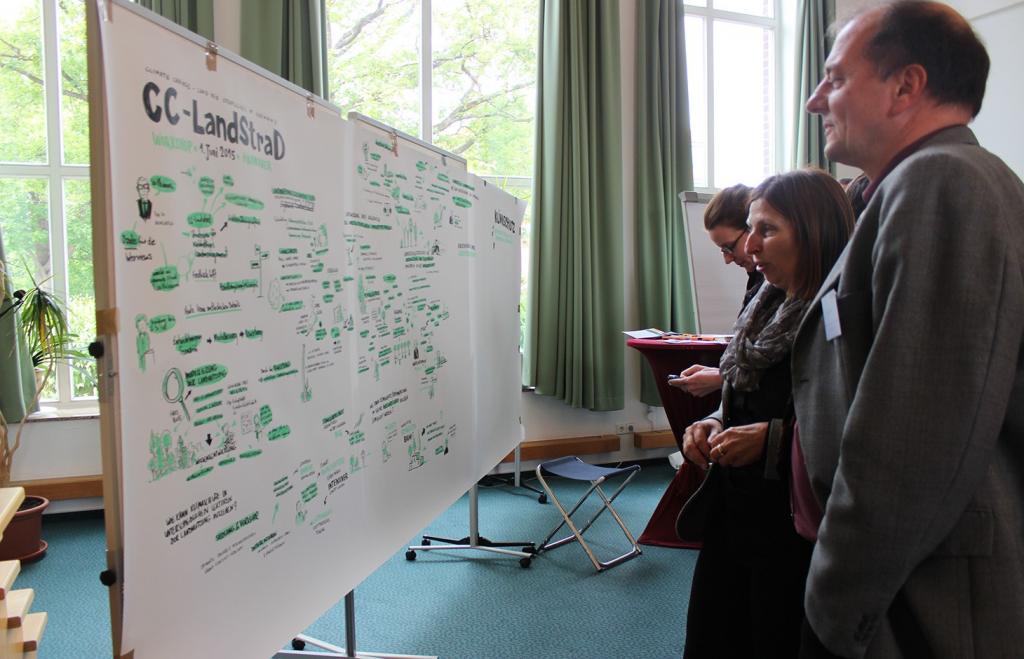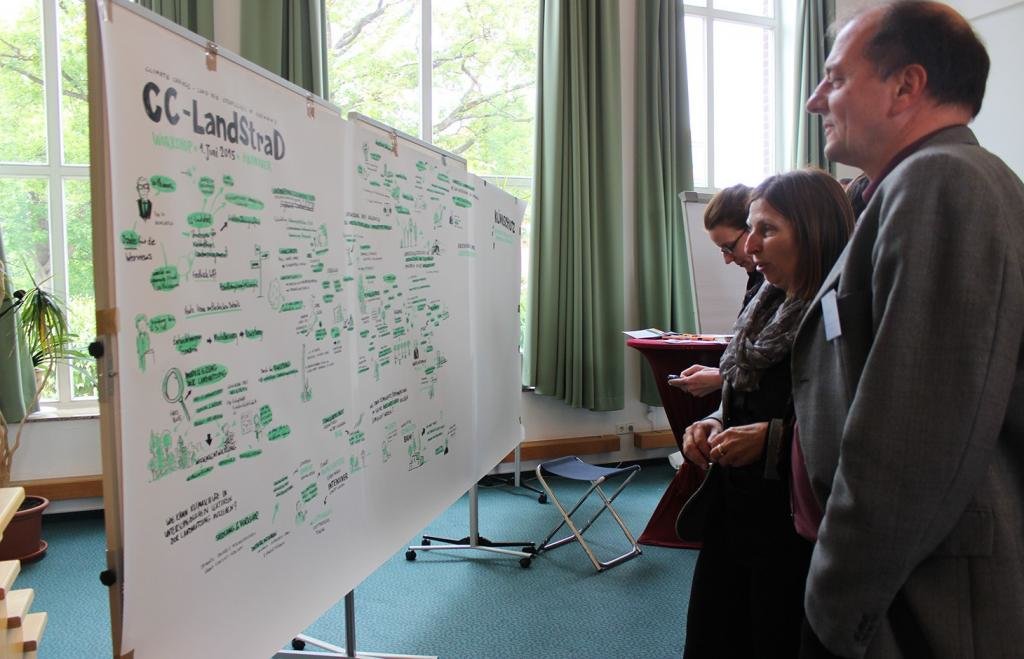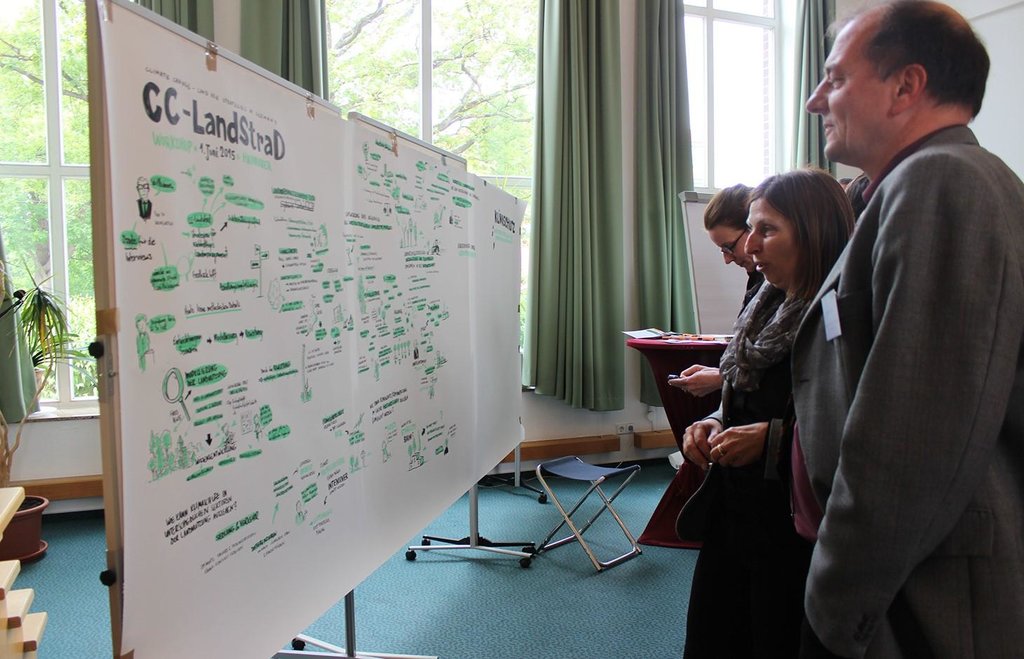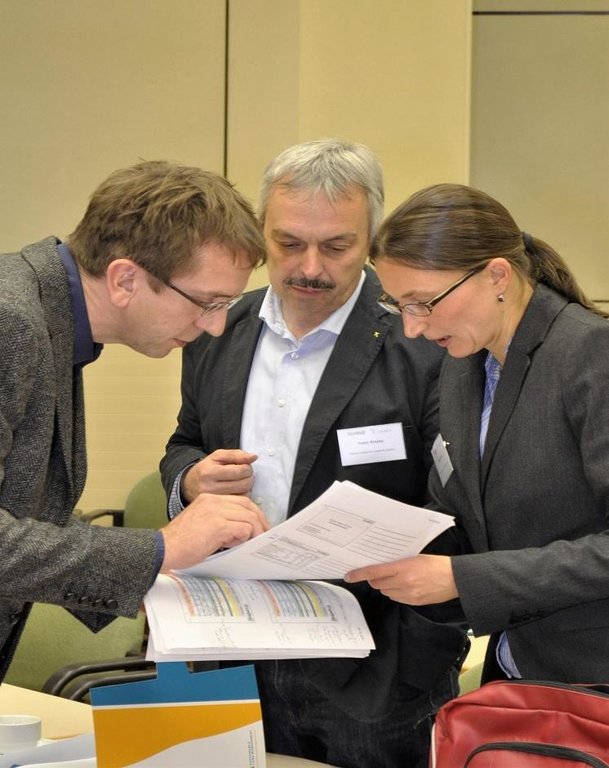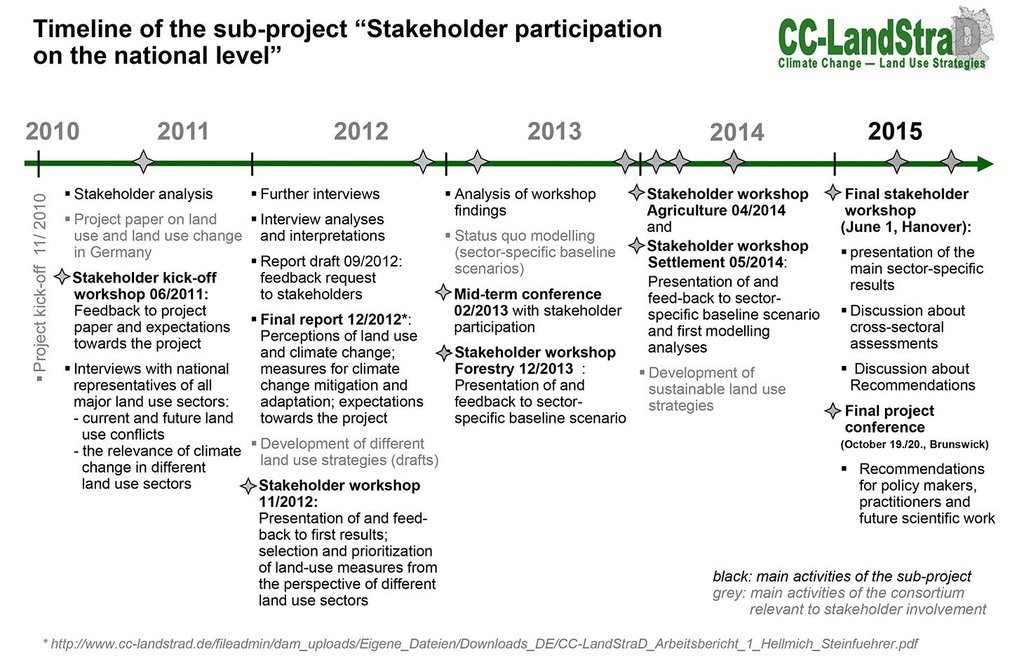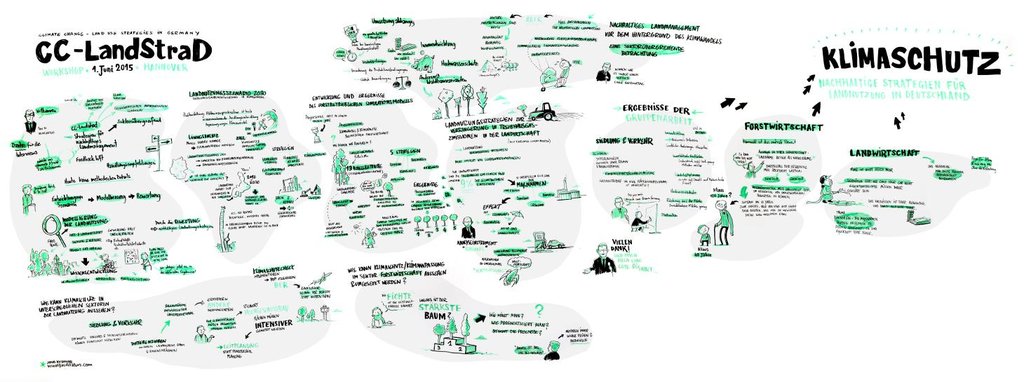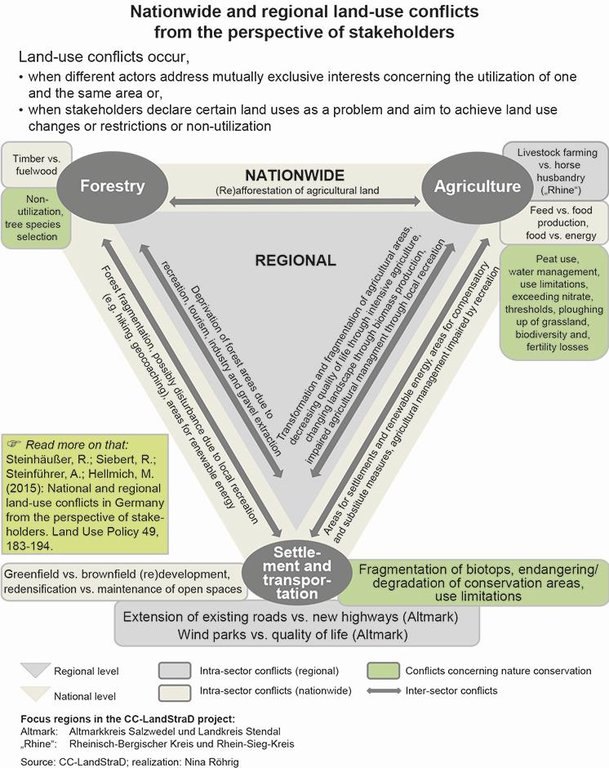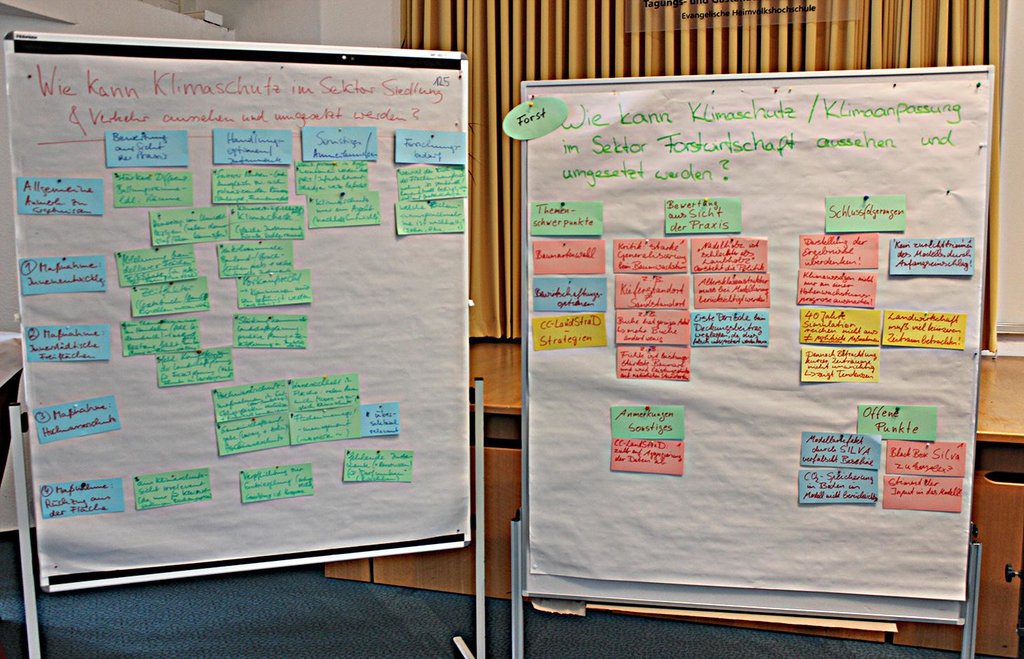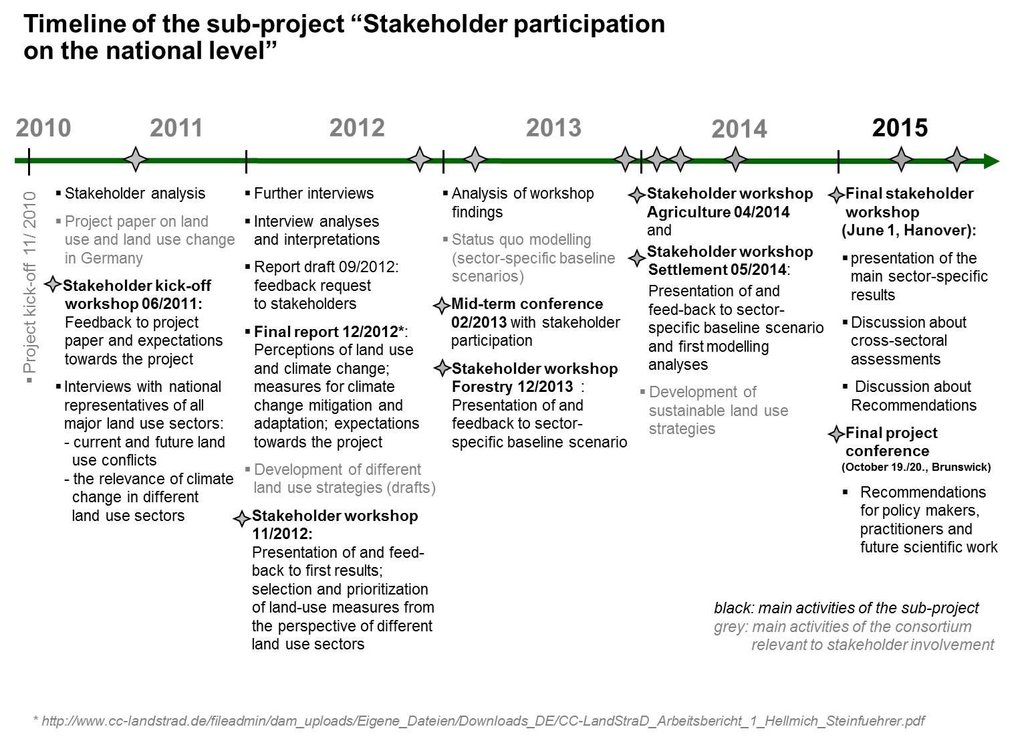Open dialogue platform on sustainable land management [德国]
- 创建:
- 更新:
- 编制者: Johanna Fick
- 编辑者: –
- 审查者: Fabian Ottiger, Deborah Niggli
approaches_2605 - 德国
查看章节
全部展开 全部收起1. 一般信息
1.2 参与方法评估和文件编制的资源人员和机构的联系方式
有助于对方法进行记录/评估的项目名称(如相关)
Book project: Making sense of research for sustainable land management (GLUES)有助于对方法进行记录/评估的机构名称(如相关)
CC-LandStraD - 德国有助于对方法进行记录/评估的机构名称(如相关)
Thünen Institute (Thünen Institute) - 德国1.3 关于使用通过WOCAT记录的数据的条件
(现场)数据是什么时候汇编的?:
04/08/2015
编制者和关键资源人员接受有关使用通过WOCAT记录数据的条件。:
是
1.4 SLM技术问卷的参考
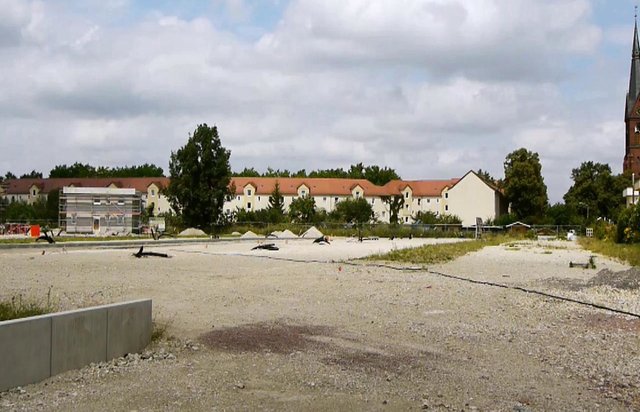
High-quality inner urban development [德国]
A scenario simulation of land use change where high-quality inner urban development is promoted, including the rehabilitation of brownfields, reuse of vacant lots, use of gaps between buildings and the improvement of existing structures.
- 编制者: Johanna Fick
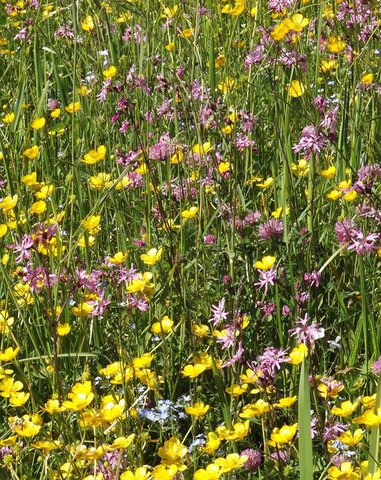
Grassland preservation [德国]
Grassland preservation by the avoidance of ploughing up of grassland and its transformation into cropland
- 编制者: Johanna Fick
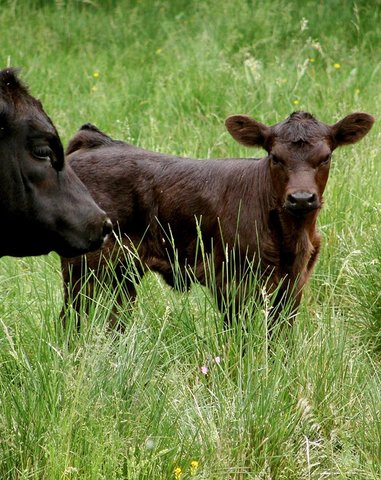
Adapted management of organic soils [德国]
Re-wetting of organic soils and following adapted management suitable for wet conditions like extensive grazing land or paludiculture.
- 编制者: Johanna Fick
2. SLM方法的描述
2.1 该方法的简要说明
Establishing a dialogue platform on sustainable land management which is open to all stakeholders
2.2 该方法的详细说明
该方法的详细说明:
Aims / objectives: The cross-sectoral stakeholder discussion platform on SLM aims to involve all relevant stakeholders in a specific SLM topic, or within a particular region in a dialogue process leading to better understanding and to a sustainable solution where there are multifunctional claims on land. The platform operates in Germany.
Examples of possible topics are to work out, together, the main land use conflicts in a region (e.g. reduced land for agriculture because of increased settlement pressures) and then to jointly develop sustainable solutions for the land use conflicts addressed. The platform was established by a non-governmental group within a transdisciplinary research project (CC-LandStraD) financed by the Federal Ministry of Education and Research (BMBF) in Germany. The transdisciplinary research approach is carried out in cooperation with regional authorities.
The platform was established by a non-governmental group of researchers of a transdisciplinary research project financed by the Federal ministery of education and research in cooperation with regional authorities (transdisciplinary approach).
Methods: The platform provides a forum to discuss specific topics cross-sectorally (for example, agriculture, forestry, settlement and transportation, and nature conservation) and for multi-stakeholders (for example land users, advisors, specialists, planners, and decision makers). To establish this platform, a neutral setting and external moderation is helpful. Methods which can be used at the platform include separate sectoral and cross-sectoral workshops, excursions, information events and newsletters. Furthermore, there are simulations of different scenarios on current land use and on land use development and distribution, and at the same time there is cross-sectorial and transdisciplinary learning. This platform is not a single event, but an on-going process. Access barriers, for example an entrance fee, should not exist.
Stages of implementation: To initiate a platform, the most relevant aspects of a region/community and all related stakeholders have to be established through a stakeholder analysis. Interviews and surveys are employed to indicate who the relevant stakeholders are. During interviews the potential stakeholders are asked who they work with regarding land use. Further stages then focus on the most relevant aspects. These may be current land use conflicts like losses of agricultural land because of settlement and transportation infrastructure. Alternatively they can be conflicts regarding production of goods either for food, feed or energy purposes, or disputes concerning intensive or extensive agriculture, with the consequent implications on nature and environment conservation. Depending on which conflict is addressed, the relevant stakeholder and the process which is needed (e.g. sectoral talks, cross-sectoral talks, focus groups) can be identified. To identify the most relevant land use conflicts stakeholder are asked to rank the most relevant land use conflicts that affect them.
Role of stakeholders: Each stakeholder is welcomed and has the opportunity to state his/her opinion in an open-result discussion. The cross-sectoral learning process is an important aspect of this approach. In the case presented case there is interaction between stakeholders from agriculture, forestry and settlement/transport as well as nature conservation, regional and environmental planning and governmental institutions. The stakeholders were asked for the main land use conflicts in their work, relevant measures to resolve the situation, and their design, then discussed the scenario assumption, and selected results and possible implications.
2.3 该方法的照片
2.5 采用该方法的国家/地区/地点
国家:
德国
区域/州/省:
Germany, Saxony-Anhalt
有关地点的进一步说明:
Altmarkkreis Salzwedel and district Stendal (total area of region: 4744 km²)
2.6 该方法的开始和终止日期
注明开始年份:
2010
终止年份(若不再采用该方法):
2015
2.7 方法的类型
- 基于项目/方案
2.8 该方法的主要目的/目标
The Approach focused mainly on SLM with other activities (different interests on SLM in dialogue, cross-sectoral and with all related interest groups)
A cross-sectoral stakeholder discussion platform on SLM aims at involving all relevant stakeholders around a specific SLM topic, or within a particular region in a dialogue process leading to better understanding and improved, sustainable, solutions. In a “business as usual” situation, generally no cross sectoral talks or interaction take place. With such a platform however, more knowledge and direct talks between stakeholders from different sectors provide the opportunity for solutions.
The SLM Approach addressed the following problems: There are different and competing demands on land which can conflict with the conventional uses for agriculture and forestry. These include biomass for energy, new settlements and transportation infrastructure. Space is also needed for tourism and leisure facilities; and also for measures of environmental protection. All of these can have an impact on the area available for, and the management of, farmland and forests. And there are competing economic interests in land management. As land is a limited resource, problems between different stakeholders are inevitable and becoming more frequent.
2.9 推动或妨碍实施本办法所适用的技术的条件
社会/文化/宗教规范和价值观
- 阻碍
All stakeholder have different backgrounds and different levels of knowledge and interests. Sometimes the relevant stakeholders don't know each other.
Treatment through the SLM Approach: A neutral setting, so that no stakeholder has a(n) (dis)advantage and an external
moderation which is accepted by all involved stakeholders, and professional input by experts (e.g. from research institutions) so that a joint learning process starts. Here it is essential to provide a good atmosphere and a common understanding of the key questions.
财务资源和服务的可用性/可得性
- 阻碍
Different stakeholders have different resources to contribute to this platform (e.g., time, finance, knowledge, equipment like beamer, microfons etc.).
Treatment through the SLM Approach: Trying to keep the barriers as low as possible and equal for each and every stakeholder (e.g. no entrance fee, public invitations in advance, central meeting location, meeting at a suitable time for the stakeholders).
法律框架(土地使用权、土地和水使用权)
- 启动
The existing land ownership, land use rights / water rights moderately helped the approach implementation: . The land ownership, land use rights/water rights are quite clear in Germany. So it is easy to identify the relevant stakeholders on SLM. But these are only a few target groups. There are much more which are relevant to get a good platform on SLM e.g. nature conservation groups, tourism associations.
工作量、人力资源可用性
- 阻碍
To implement and run a dialogue platform it takes time and professional skills and resources (e.g. high motivation and high frustration tolerance, moderation and motivation methods, knowledge about group dynamics).
Treatment through the SLM Approach: Be aware of this before the dialogue platform is set-up (such a process is not a one-off short-term, activity: it’s better thought of as medium-long term process).
其他
- 阻碍
1. Stakeholders have different levels of knowledge and professionality
2. Previous conflicts (some known; some hidden) and other areas of controversy sometimes come to light during discussions.
Treatment through the SLM Approach: 1. It is necessary to make information accessible by moderation and to create common understanding (e.g. sometimes the same term exists in agriculture and forestry but has a different meaning).
2. Be sensitive to nonverbal communication or conflict topics and be prepared to deal with such issues even if not communicated verbally.
3. 相关利益相关者的参与和角色
3.1 该方法涉及的利益相关者及其职责
- 当地土地使用者/当地社区
Farmers, forest owners, counties, municipalities, associations on agriculture, forestry or nature conservation
Participating groups with less financial resources received travel grants
- SLM专家/农业顾问
- 国家政府(规划者、决策者)
Regional planners, planners on settlement and transport
On federal and county level
Remark: should include: agricultural, forestal, settlement and transport sector as well nature conservation. It is essentiell to deal with all of these people, that is the important part of this approach
如果涉及多个利益相关者,请注明领导机构:
We initiated this approach by a non-govenmental group of reseachers in cooperation with regional authorities. But this approach is not related to one body. Either national non-government or government or private sector or local government or local community/a group of land user can start the approach.
3.2 当地土地使用者/当地社区参与该方法的不同阶段
| 当地土地使用者/当地社区的参与 | 指定参与人员并描述活动 | |
|---|---|---|
| 启动/动机 | 互动 | scientists working with transdisciplinary processes |
| 计划 | 互动 | scientists on transdisciplinary processes and disciplinary scientists on SLM |
| 实施 | 被动 | all involved stakeholders mentioned above = passive; scientists = interactive |
| 监测/评估 | 被动 | all involved stakeholders mentioned above, scientists |
| Research | 互动 | all involved stakeholders mentioned above and all scientists |
3.3 流程图(如可用)
具体说明:
Time sheet stakeholder participation on national level.
The ‘sub-project' started in the first year with an overview workshop on current and future land use and climate change, followed by face-to-face interviews. The second year focused on the process to identify the most relevant measures for climate mitigation of each sector (agriculture, forestry, settlement and transportation, and nature conservation). The last three years were used to discuss preliminary results and to evaluate the results from the stakeholder perspectives.
作者:
Meike Hellmich, Annett Steinführer (Thünen-Institut Braunschweig)
3.4 有关SLM技术选择的决策
是否就技术的选择做出了决定?:
- multi-stakeholder dialogue process
解释:
Land users supported by SLM specialists e.g. an extensive management of grassland
SLM specialists with consultation of land users: practical test phase of new technology or innovative practise
by politicians / leaders (e.g. decisions regarding societal aims like environment protection)
Decisions on the method of implementing the SLM Technology were made by no decisions. No decisions have been made yet.
4. 技术支持、能力建设和知识管理
4.1 能力建设/培训
是否为土地使用者/其他利益相关者提供培训?:
是
明确受训人员:
- 土地使用者
- 现场工作人员/顾问
- involved people
涵盖的主题:
The activities focused on each level/stage (measures, scenarios, results and implication) to provide knowledge to and with all participants in order to focus on the meeting's objectives and to raise awareness (why are we doing this? why is it important to be here? why should we talk about this topic?).
4.2 咨询服务
土地使用者有权使用咨询服务吗?:
是
说明/注释:
Advisory service is quite adequate to ensure the continuation of land conservation activities; The approach raised awareness and brought people together who normally don’t discuss topics with each other.
4.3 机构强化(组织发展)
是否通过这种方法建立或加强了机构?:
- 是,少许
具体说明机构的强化或建立程度:
- 本地
说明机构、角色和职责、成员等。:
This method can support local institutions via the input and mutual discussions of regional associations and groups. However, certain groups may mutually exclude each other.
4.4 监测和评估
监测和评估是该方法的一部分吗?:
是
注释:
socio-cultural aspects were monitored by project staff through observations; indicators: Interviews by scientists at the project end regarding cross-sectoral and transdisciplinary approach
There were no changes in the Approach as a result of monitoring and evaluation
There were no changes in the Technology as a result of monitoring and evaluation
4.5 研究
研究是该方法的一部分吗?
是
明确话题:
- 社会学
- 经济/市场营销
- 生态学
提供进一步的细节,并指出是谁做的研究:
Simulation of land use development in Germany was undertaken, including simulation of agricultural economics, forest economics and simulation of settlement and transport areas development, of GHG emissions of land use, and a population survey on perceptions of landscapes
Research was carried out on station
5. 融资和外部物质支持
5.1 该方法中SLM组成部分的年度预算
如果不知道准确的年度预算,请给出一个范围:
- < 2,000
注释(例如主要的资助来源/主要捐助者):
Approach costs were met by the following donors: government: 95.0%; local government (district, county, municipality, village etc): 5.0%
5.2 为土地使用者提供财政/物质支援
土地使用者是否获得实施该技术的财政/物质支持?:
否
5.3 对特定投入的补贴(包括劳动力)
- 无
注释:
Time which was needed to take part in the dialogue platform other inputs not relevant
5.4 信用
是否根据SLM活动的方法给予信用值?:
否
6. 影响分析和结论性陈述
6.1 方法的影响
该方法是否帮助土地使用者实施和维护SLM技术?:
- 否
- 是,很少
- 是,中等
- 是,支持力度很大
The complex topic land use and climate change (with focus on climate change mitigation) was analysed and presented to the involved stakeholders. The interaction during cross-sectoral workshops gave a more detailed picture on SLM compared with workshops with a sectoral focus. The better knowledge base helps to improve SLM.
该方法是否有助于社会和经济弱势群体?:
- 否
- 是,很少
- 是,中等
- 是,支持力度很大
Not in the focus
Did other land users / projects adopt the Approach?
- 否
- 是,很少
- 是,中等
- 是,支持力度很大
The approach is also used in regional development processes sometimes.
Did the Approach lead to improved livelihoods / human well-being?
- 否
- 是,很少
- 是,中等
- 是,支持力度很大
; the awareness of intensive land use in Germany and in our focus regions was raised, especially regarding the interaction between agricultural land use and (for example) water quality because of intensive agriculture including the application of fertilizers, pesticides or herbicides. Often these chemical inputs cannot absorbed by plants or soil so the unused resources concentrate in groundwater and thus needs to purified before drinking. Land use improvements can be achieved by agreeing the division between settlement, transport and land for agricultural production - and also for sustainable land use to reduce GHG emissions in agriculture and forestry.
Did the Approach help to alleviate poverty?
- 否
- 是,很少
- 是,中等
- 是,支持力度很大
6.2 土地使用者实施SLM的主要动机
- 加入运动/项目/团体/网络
in this approach all land using sectors were involved for the first time
6.3 方法活动的可持续性
土地使用者能否维持通过该方法实施的措施(无外部支持的情况下)?:
- 是
若是,请说明如何维持:
This approach is suitable for different levels, for different topics or different stakeholders involved.
6.4 该方法的长处/优点
| 土地使用者眼中的长处/优势/机会 |
|---|
| New information, innovative methods and results, current political trends (How to sustain/ enhance this strength: Presentation of new information has to be in a language adequate for the target groups.) |
| 编制者或其他关键资源人员认为的长处/优势/机会 |
|---|
| Added value e.g. research can be needed to get new input (How to sustain/ enhance this strength: Clear announcement of added value for different target groups) |
| All relevant stakeholders are involved (How to sustain/ enhance this strength: make sure that all relevant stakeholders are identified during the initial stakeholder analysis.) |
| Cross-sectoral and sectoral meetings by turns, depending on specific aspects of the meeting (How to sustain/ enhance this strength: Problem and solution oriented talks and meetings) |
| Neutral setting and external moderation |
| New information and knowledge by researcher is shared (How to sustain/ enhance this strength: Cooperation with research institution) |
6.5 该方法的弱点/缺点以及克服它们的方法
| 土地使用者认为的弱点/缺点/风险 | 如何克服它们? |
|---|---|
| There should be an added value for land user and the added value should be addressed clearly. | e.g. new information provided by researcher must be tailored to the different stakeholders. |
| 编制者或其他关键资源人员认为的弱点/缺点/风险 | 如何克服它们? |
|---|---|
| It takes time to produce the right working atmosphere and to reach a common language. | Avoid short-term initiatives. |
|
The moderation has to be accepted by all stakeholders. |
7. 参考和链接
7.1 方法/信息来源
- 实地考察、实地调查
- 与土地使用者的访谈
7.2 参考可用出版物
标题、作者、年份、ISBN:
Steinhäußer, R. et al. (2015) National and regional land-use conflicts in Germany from the perspective of stakeholders
可以从哪里获得?成本如何?
Land UsePolicy 49, 183-194
标题、作者、年份、ISBN:
• Lange, A.; Siebert, R.; Barkmann, T. (2016) Incrementality and Regional Bridging: Instruments for Promoting Stakeholder Participation in Land Use Management in Northern Germany.
可以从哪里获得?成本如何?
Society & Natural Resources , Jul2016, Vol. 29 Issue 7, p868-879, 12p.
链接和模块
全部展开 全部收起链接

High-quality inner urban development [德国]
A scenario simulation of land use change where high-quality inner urban development is promoted, including the rehabilitation of brownfields, reuse of vacant lots, use of gaps between buildings and the improvement of existing structures.
- 编制者: Johanna Fick

Grassland preservation [德国]
Grassland preservation by the avoidance of ploughing up of grassland and its transformation into cropland
- 编制者: Johanna Fick

Adapted management of organic soils [德国]
Re-wetting of organic soils and following adapted management suitable for wet conditions like extensive grazing land or paludiculture.
- 编制者: Johanna Fick
模块
无模块


